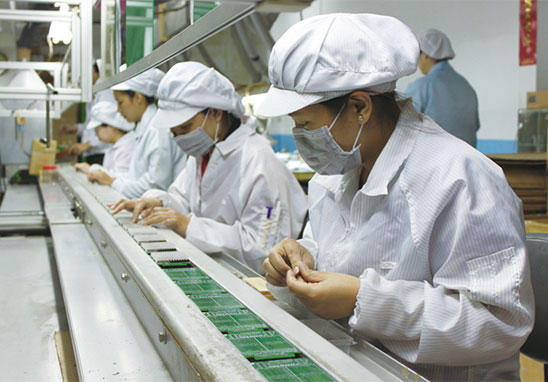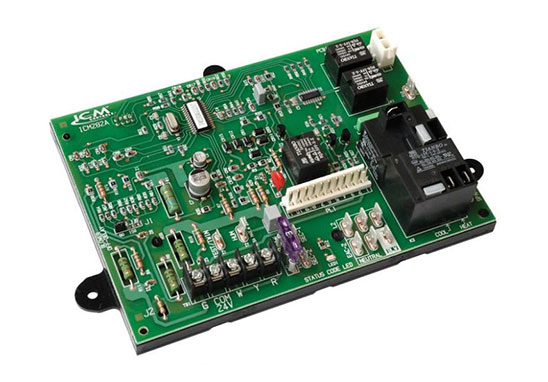Grande Electronics specializes in providing one-stop electronics manufacturing services (EMS), including PCB Manufacturing, Components Procurement, Assembly, Fuctional Test as well as Box Build Service. Now, Grande will introduce the benefits and operating procedures of the dispensing technology for PCB Assembly.

The Usage Of Glue Dispensing Technology
The printed circuit board (PCB) uses glue dispensing technology in PCB Assembly, which is mainly used for waterproof, dustproof and anti-corrosion. Nowadays, with more and more companies have put forward higher-level requirements for the usability and stability of those electronic products, the dispensing technology in PCBA has become an indispensable procedure.
Long-term effective protection to those electronic equipments whose circuit boards are sensitive and some electronic components which is exactly a manifestation of today’s sophisticated and demanding electronic equipment applications which play an increasingly vital role. What’s more, the waterproof glue used in the dispensing PCBA with stable dielectric insulation, which is an effective measure to prevent environmental pollution. At the same time, it is able to offset the stress caused by shock and vibration within a certain temperature range and humidity range.
The glue used in the dispensing PCBA is based on the principle of condensation, addition reaction and solidification so that it no need secondary solidification anymore. As a result, it’s not only meet the special requirements of bonding, thermal conductivity, but also flame retardancy and high transparency. Meanwhile, after solidifying, the circuit board turns to be a flexible elastomer; By the way, the solidifying speed is even, which has no relationship with the thickness of the circuit board processing or the close state of environment.

Benefits & Characteristics Of Glue Dispensing Technology
1)After the circuit board processing andglue dispensing process is completed, the product is moisture-proof, waterproof, weather-resistant, and can be used for a long time.
2)Nocorroding metal & Be suitable for potting and sealing PCBA modules.
3)Goodresistance against shock and deformation;
4)High insulationandstable performance after glue dispensing.
5)Good fluidity, quick self-leveling&high potting production efficiency.
6)With detachability, a certain component of the sealed circuit board can be taken out for repair and replacement, and then repaired with waterproof glue without leaving traces.
Glue Dispensing Process Operation Procedure
1)Cleaningthe PCBA board:Scrubing and cleaning the PCBA board with absolute alcohol and bristle brush, especially removing the rosin, solder and other residues in the solder joints;
2)Dryingthe PCBA board: Dryingthe PCBA board with a dryer or a hot air gun. After drying, recheck PCBA board carefully and see if there are obvious cold solder joints, short-circuit solder joints and solder residues;
3)Using waterproof glue: Brushingthe waterproof glue on the PCBA board with a brush, or immerse the whole PCBA board in the waterproof glue;
4)Waiting the solidification ofwaterproof glue.Generally, it takes more than 12 hours to dry naturally before starting next process. Besides, artificial assisted drying can also be used to speed up the solidifying progress;
5)Testingthe function of thePCBA board. If it is abnormal, then repair it and restart the dispensing process of the waterproof glue circuit board from step 3. If it is normal, proceed to the next step;
6)Fillingthe entire PCBA board to the shell part with epoxy resin/silicone/glue stick, etc., fixingthe wiring and sealing it; Pay attention not to leave dead corners; And the glue should be as smooth and pretty as possible;
7)Last but not least,waterproof glue usually takes over 24 hours to dry completely. Once dried, in the light of the actual situation, random inspection or full inspection of the PCBA board to confirm whether the board function is normal or not.

Turnkey PCB Assembly Service Flow
1)PCBAProject Inquiry /Quotation: Customers provide completed PCBA files, including Gerber, BOM, PCB Manufacturing Requirements, Quantity, etc;
2)CustomersPlace Orders:Confirming the Quotation, Sharing Purchasing Order (PO), and arranging the advance payment;
3)EngineeringEvaluation:Evaluating PCBA Files by engineers and then transforming into final production files;
4)PurchasingRaw Materials:According to production files, to arrange PCB manufacturing and components procurement;
5)PCBAProduction:Starting SMT & DIP once PCB and components are all prepared;
6)PCBATesting:Testing the finished PCBA board according to customer’s PCBA Testing Method;
7)Packing andAfter-Sales:Customers arrange the balance, then packing and shipping PCBA.
